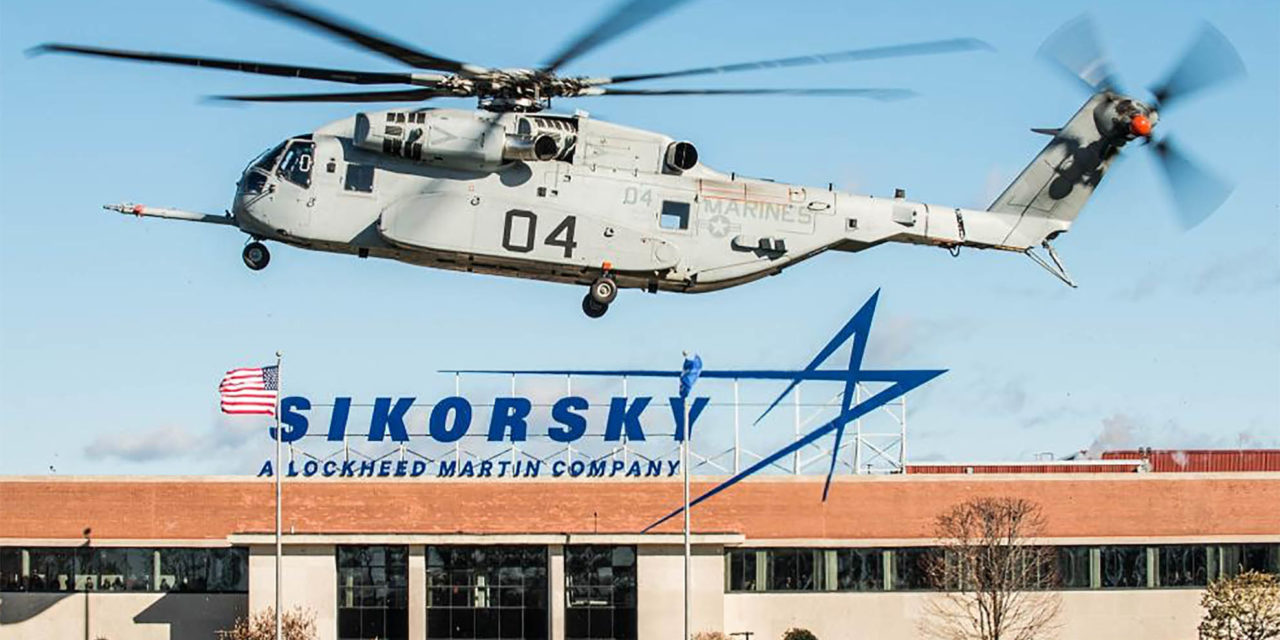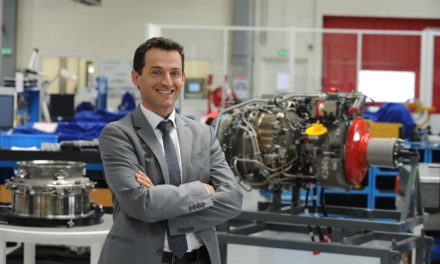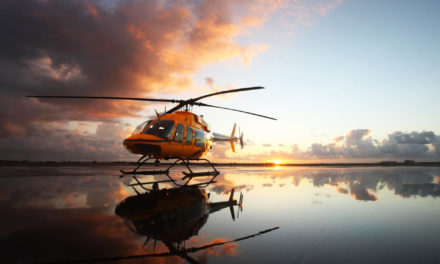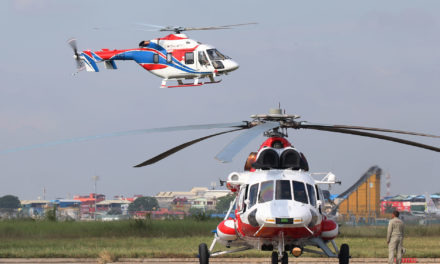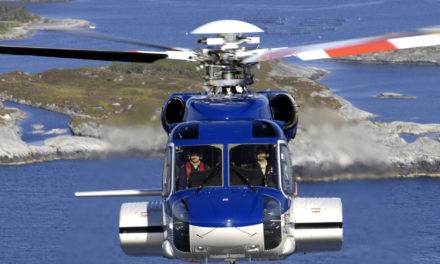80 years ago, Russian-born inventor-engineer and pilot Igor Sikorsky made the first flight of his self-designed single-rotor helicopter, the VS-300. This human and technical feat has given rise to a family of aircraft that have been entered into the history of aviation. By François Blanc
On September 14, 1939, at 30 years old, the American inventor, engineer and pilot, Igor Sikorsky himself took control of a self-designed rotary wing machine with hopes of making it fly. The scene takes place within the United Aircraft Corporation (later known as United Technologies) facilities in Hartford, Connecticut, where Sikorsky headed the company’s very young helicopter division. The fearless pilot was not new to the world of aeronautics.
Interested in aviation at a time when it was in its infancy – Igor was born on May 25, 1889 in Kiev, a Ukrainian city in the Empire of the Russian Tsars – he had devoted himself at a very early age to studying and designing, what would later become the helicopter. According to him, it was the second step in the conquest of the sky, after the historical flight of the Wright Brothers, Wilbur & Orville, on December 17, 1903, aboard their fixed wing airplane.
In 1908, at age 19, he had already designed his first vertical takeoff and landing aircraft, using the principle of counter-rotating coaxial rotors. Although, it was not ready to be flown, or even attempt a takeoff. The inventor knew that due to a lack of on-board power and sufficiently resistant materials, the road would be long before the possibility of reaching the goal.
Going to Paris
The first stage of his journey had taken him to Paris, where he had gone in January 1909, encouraged by his parents. Why Paris? Because at the time, France was the most active and most advanced country, as far as engine and airframe design and construction were concerned.
By the time of his return to Kiev in April 1909, he had obtained the necessary foundations for aircraft design and construction. He even brought back a 25hp air-cooled Anzani engine, as well as a few metal aircraft parts and substantial documentation – Igor read and spoke French. At Port-Aviation (in Juvisy, near Paris), he had met, among other people, Captain Ferdinand Ferber, an officer who was very familiar with the works of the pioneers in the industry, in addition to knowing all of the available techniques. Once, Sikorsky had explained his helicopter dreams to Ferber, who had simply dissuaded him from pursuing the idea, as the goal was still too high to reach. However, the young Russian inventor, as soon as he returned home, had thrown himself into the design of his SH-1. For two months, from May to June 1909, he had worked, calculated, concocted, and assembled his helicopter. And yet, power was lacking, along with effective flight controls. The SH-1 would remain in a model state in the laboratory. Then came a second machine, a little lighter and capable of a few poorly controlled leaps. It was destroyed during the course of a testing session. Igor understood then that Captain Ferber was right. Fully aware of the efforts to be made before a piloted and controllable helicopter takes off, he had concluded that he should first focus on the design and construction of fixed-wing aerodynes…
The American dream
From his first airplane, the S-1, Igor Sikorsky set out on a new path, as a designer and pilot. From the beginning, as if he had never felt the slightest fear for his life, he had made it a point of honor to fly his own creations himself.
In 1910, the first flight of his S-2 was completed. After, in 1911, he obtained his pilot license from the Imperial Aeroclub of Russia. Two years later, his S-9 was the first monohull aircraft built in Russia. Until 1916, he continued developing aircrafts, building the first four-engine in the world, winning several world records (autonomy and useful load), and in 1914, he made the largest hydroplane ever built, fly.
Then came the Russian revolution of 1917. For him, who had been honored twice by the Tsar himself, the future had darkened. In March 1918, he decided to leave his family and native Russia. A new life, full of uncertainty, had opened in front of him.
At the port of Kola (now Murmansk), he embarked for England and then joined France, where many aviation specialists knew him. Introduced to the military authorities, he had obtained an order for five prototypes of a new bomber. On November 11, 1918, the Armistice, ended the project. Tempted to stay in France, he realized that his best chance for success was now in the United States of America.
On March 14, 1919, a year after leaving his homeland, he had landed in New York and come into contact with some immigrants from White Russia, whom he would found Hannevig-Sikorsky Aircraft Company on Long Island. Struck by the considerable delay of the United States compared to Europe in aviation, he had come to realize the lack of vision of Americans toward the development of commercial aviation. Therefore, he turned to the military authorities of his host country.
30 years of patience
With a letter of recommendation from the American General, Mason Mathews Patrick, head of the US Army Air Service (USAAS) deployed to Europe at the end of the 1st World War, he had managed to attract the attention of military authorities. Gradually, he had begun to finally establish himself as a leading aircraft manufacturer: between 1923 (the year he founded the Sikorsky Aero Engineering Corporation) and 1937, he had resumed his activities as a pilot and engineer, built seven different types of aircraft (including the giant commercial seaplane, the American S-40 Clipper), and once again won several World records.
On September 14, 1939, when he moved to the helm of his VS-300 helicopter, Igor Sikorsky was already a leading player in the aviation world. He also shows how much his childhood dream – the vertical takeoff and landing – was still present 30 years later. As proof, it is only necessary to consider the patents that he filed on June 27, 1931, then on March 19, 1935, dealing with systems capable of solving the problems inherent in any vertical takeoff aerodyne equipped with a single lift rotor: torque effect compensation and yaw steering control.
At the end of summer 1939, the first “lift-off” of the machine piloted by its inventor, a little more than 10 centimeters from the ground, it was a success in itself, even if long months of study would still be necessary before reaching the goal: total control of the flight in the three dimensions. Thus, Igor Sikorsky and his engineers developed a version without cyclic control of the main rotor blades, before returning to this rational but problematic technical solution. From modifications to attempts at testing a number of hypotheses, the VS-300A, VS-300B and VS-300C (which flew in March 1940) succeeded in their first test flights. Although, many obstacles remained to be overcome: elimination of hazardous vibrations, development of precise and reliable flight controls, and demonstration of autorotation.
Captive and free flights would come before Sikorsky, who put more energy into drawing the military’s attention to the progress of his work. He then built his first single-rotor with an anti-torque rotor: the VS-316, called R-4 by the military authorities who ordered the prototype XR-4, two-seat version of the VS-300C-2. The first copy would be delivered in 1942.
Twenty types of helicopters would follow the R4 over the next half-century.
At 68, Igor Sikorsky retired from Sikorsky Aircraft (1957), and remained a consulting engineer in the years that followed. He died on October 26, 1972. He was 83. The day before he died, he was working at his desk.

